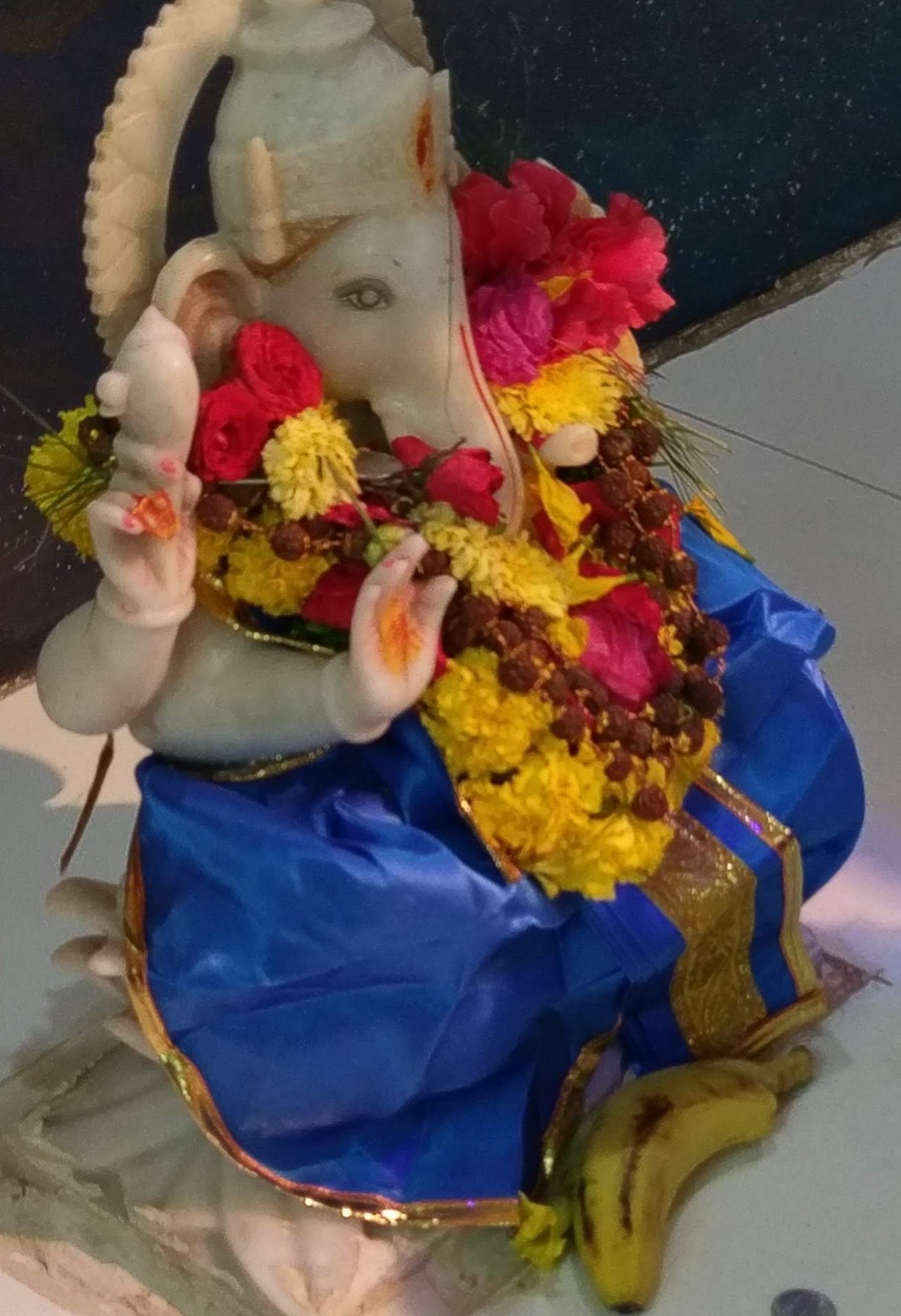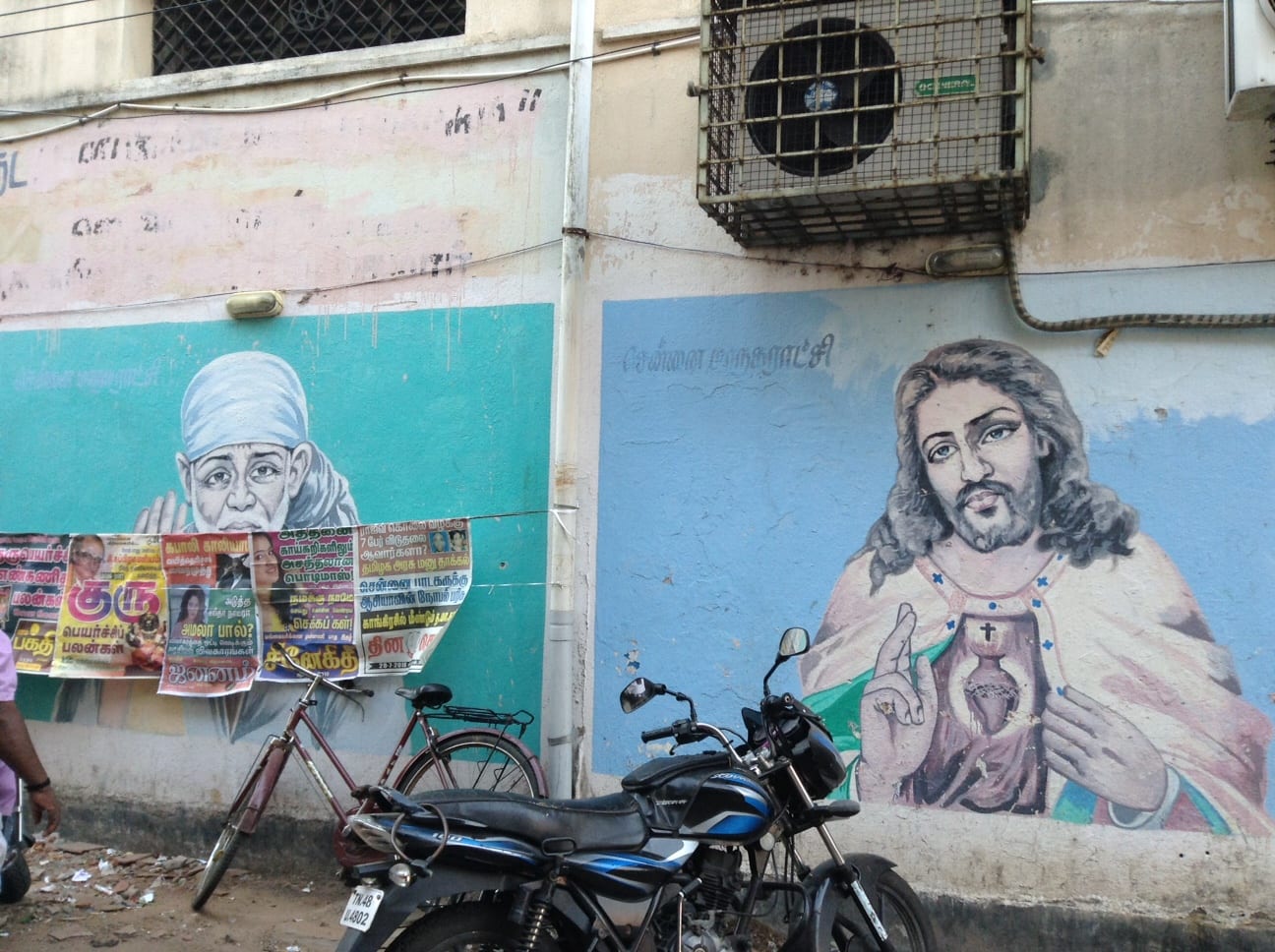Sai Baba Shirdi Shrine,
Hyderabad,
17 January 2019,
Geoffrey van Dover

Shrine to Sai Baba of Shirdi

Outside of temple of Sai Baba

Murti of Ganesh
Right off the highway so you can hear all the traffic, is this small two-story Hindu shrine dedicated to Sai Baba Shirdi. The temple is colorful with lots of bright lights and the smell of incense dissipating out of the shrine. The ground in the front of the shrine is often decorated with sand art.
Color in Hinduism
This is a temple to Sai Baba. Sai Baba was an Indian spiritual master and leader. He was known to perform miracles and started a branch of Hinduism that is heavily influenced by Islam. This was to the extent that it wasn’t know if he was a Hindu or Muslim. When the guru died, his followers placed him on a spiritual pedestal and today he is viewed as an avatar of Shiva. Statues of him are made and they are treated like statues of Krishna and Rama.
The one way a Hindu temple stands out more than sacred space in any other religion is the decorations. The colors used to decorate a Hindu temple are so vibrant and full of energy that it makes a Christian church look dull. We’ve seen Hindu temples with bright red canopies. Ones painted to look like a rainbow. Many have bright lights illuminating them and look like something you’d see at a state fair or in Las Vegas. The colors have both function and religious significance. They can function to get the attention of a passerby or anyone looking for a place to worship. They can also function to identify the emphasis a certain temple places on the different aspects of Hinduism. Most temples are therefore decorated with a bright yellow to show the purpose is for spiritual growth. But tthe use of colors in Hinduism and the decoration of Hindu temples is rooted in tradition and has a deeper meaning. For instance; red: in Hinduism, red represents blood, which is seen as life giving and pure. However, in culture, red is also associated with menstrual blood which make color viewed as impure. The most common color is saffron, which to Hindus is a representative color for fire. Fire is extremely important in many Hindu rituals as it is believed to burn impurities away. But saffron also represents purity and protection, which is why there is saffron powder or saffron flower garlands often placed around a statue. Another common color is yellow which is used to protect murti (statue or icon) from evil spirits. But yellow also represents knowledge and the cultivation of the mind, making it a color strongly associated with Vishnu. And green can represent nature and is an overall festive color. Each color represent a certain quality or concept and is used in specific cases for each ritual. When decorating a Hindu temple, the variance of colors used show two things: that this temple houses deities of great power, and that the power and benevolence of these deities should be celebrated.
